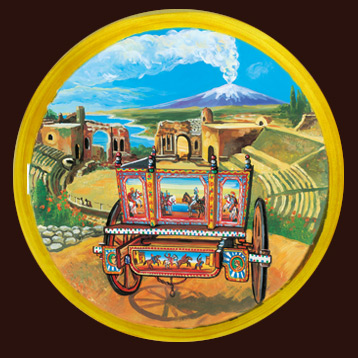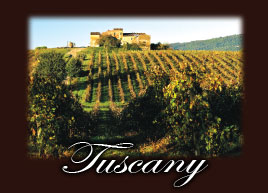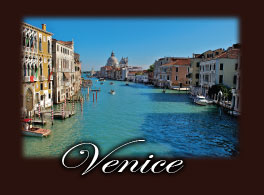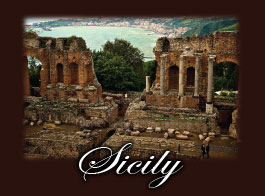
Directly From Italy - Handcrafted & Hand Painted.
Sicily Collection - "Sicilia"
 |
LIMTED EDITION 15" SICILY COLLECTOR SCENIC WALL PLATE
|

| a. GARLIC POT (2 qt. ) 7" Dia. b. CENTERPIECE SERVING BOWL (4 qt. ) 16.5" x 4" c. CARAFE (1.78 qt. ) d. LARGE RECTANGULAR BAKER (4 qt. ) 16.38" x 9.36" x 3.12" e. SALT & PEPPER SHAKERS 3.1" x 1.6" |
f. PASTA BOWL (1.25 qt.) 8.75" Dia. g. DINNER PLATE 11.5" Dia. h. SPOON REST 10.375" i. SMALL SQUARE BAKER (2.25qt. ) 9.75" x 9.75" x 2.73" j. SPAGHETTI MEASURE 10" x 3.12" |
| THE INSPIRATION OF THE REGION A common sight in Sicily during parades and celebrations is a caretto Siciliano (Sicilian Cart). Traditionally the carts were used to haul produce, wood, wine and people. Horses were primarily used in the city and donkeys or mules were used in rough terrain. In modern-day Sicily, the tradition continues in small, three-wheeled motorized vehicles called "lapa" which are often painted in the traditional way. The "Teatro-Greco" is the second largest theatre in Sicily and has a panoramic view of both Mt. Etna and Taormina with the sea below. Teatro-Greco dates back to the Hellenistic period, 3rd century B.C. It was first used as a theater with the orchestra at the center and nine sections with eight rows of seats which could hold up to 10,000 spectators. In the 3rd century A.D., it was changed to an amphitheater with wild beasts and gladiators for sporting shows. In the medieval ages, it was used as a palatial residence. |
 |
 |
 |